Danish pastries, also known as just “Danish” or “Danishes”, are well-known sweet pastries cherished not only in Denmark but also around the world. Danishes are made of yeast-leavened, laminated dough with a flaky texture, and yes, they’re delicious! To the uninitiated, they might seem a bit like croissants in taste and texture, however, the analogy is rather pointless. Tasting a Danish pastry is a gastronomic experience of its own, and, for us sweet-toothed people, a mouth-watering and deeply satisfying experience at that.
Wienerbrød or Danish Pastry?
Danishes are known as Danish pastries around the world. Everywhere except Denmark, that is. In Denmark, these delicacies are called wienerbrod (wienerbrød), which means Viennese bread.
Understandably, this raises the question, what does Vienna have to do with a traditional Danish specialty? The answer is, a lot! In fact, without the influence of Viennese bakers, there probably wouldn’t be a Danish pastry. At least not as we know it. It is rather unclear whether it was Austrian bakers who came to work in Denmark back in the 19th century, that developed the recipe for Wienerbrød. Others suggest that it was a Danish baker who traveled to Vienna, who, inspired by local baking traditions, came up with the idea for this delicious treat. Either way, Wienerbrød has come to be unmistakably Danish!
Danish Pastry types
The large number of different types of Danish pastries indicates a wide variety of delicious flavors to choose from. In general, different kinds of Danishes may contain one or many more additional fillings. Sometimes the pastries tend to be much softer and sometimes tend to be much crispier than others. Whatever the case may be, you would be well advised to form your opinion about Danish pastries by trying them all! That being said, let’s take a quick look at some of them!
Spandauer (Spandauer pastry)

There are many types of Danishes. However, what most people refer to when they talk about Danish pastries is the spandauer. This is the iconic Danish pastry, usually in the shape of a circle and filled with custard cream or jam in the middle. If you were to try just one type of danish pastry then that should be it (though let’s be honest, there’s no good enough reason to not try all you can find!).
Kanelsnegle (Danish cinnamon rolls)
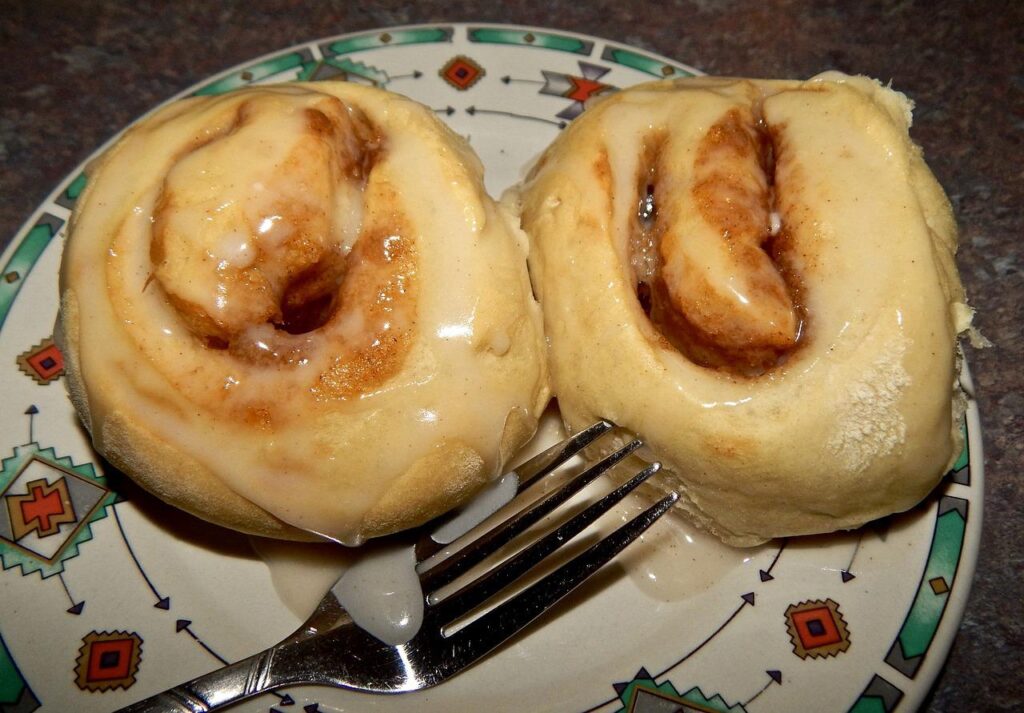
A kanelsnegl is a Danish cinnamon bun and, like the spandauer, it needs little introduction. These dearly loved sweet rolls take their name from snails (snegl means snail), as their shape is reminiscent of the shell that these friendly gastropods carry. Needless to say, these Danish swirls (yet another way to describe kanelsnegle!) have a strong cinnamon flavor and are usually topped with a sugar glaze. If you ask us, it’s the pasty cinnamon filling that makes Danish cinnamon rolls the awesome treat that it is. Danish pastry at its best!
Direktørsnegl (chocolate roll pastry)
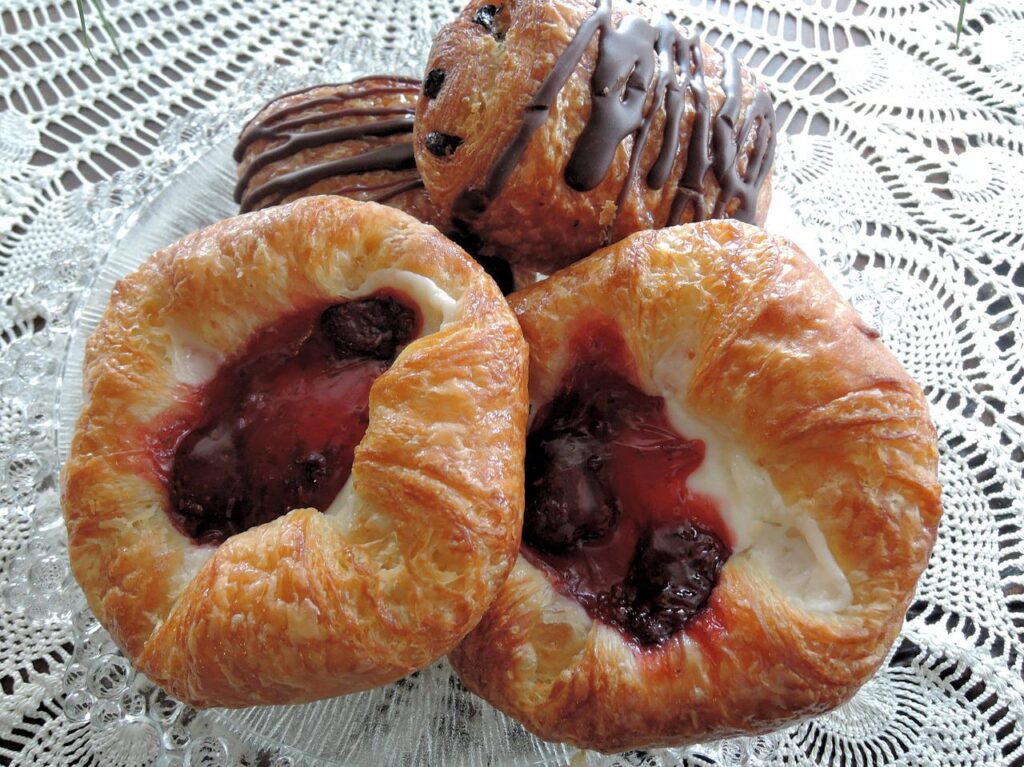
If your immediate thought when reading about kanelsnegl was that it would taste great filled with chocolate, then direktørsnegl is for you! A Danish cinnamon roll that swaps cinnamon for chocolate (or keeps the cinnamon and adds a generous amount of chocolate, you can find both versions). There is no definitive answer as to why someone decided to call it direktørsnegl (boss snail) but hey, chocolate sure is boss!
Frøsnapper (Poppy seed Danish pastry)
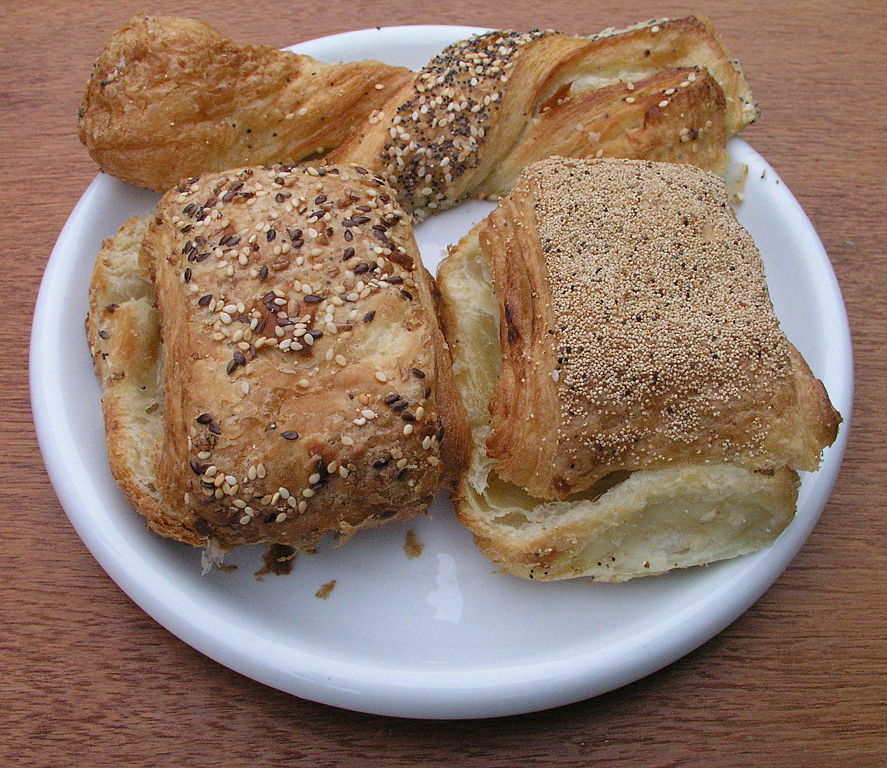
Frøsnapper is a Danish pastry with poppy seeds and a twisty shape. Although poppy seeds are a trademark ingredient of this snack, it is very often sprinkled with other seeds too. Its taste balances between sweet and savory. This is making it ideal for those who’d rather have something less sweet than a typical Danish pastry. No matter where you stand on the sweetness-craving spectrum, you won’t regret trying it!
Rabarberhorn (Rhubarb Horn)
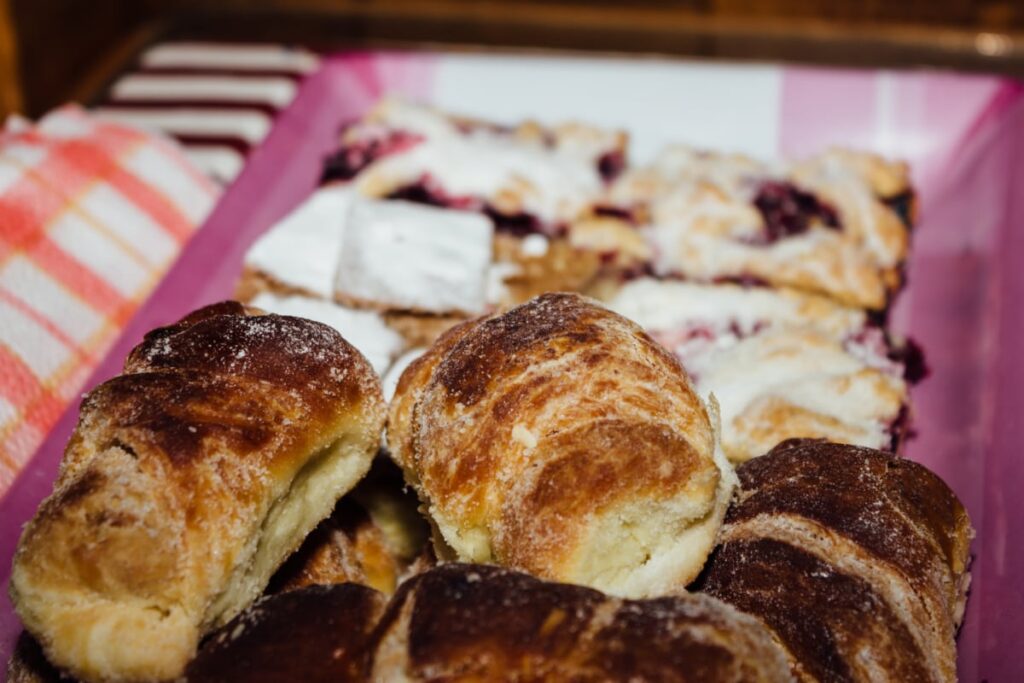
Rabarberhorn resembles a horn, hence its name. It also resembles a croissant, more than any other Danish pastry! Appearances aside, it combines the sweetness of the marzipan filling, with the slightly acidic taste of the rhubarb, all wrapped around a soft and tasty buttermilk dough. It’s a seasonal treat that you’re most likely to find from late summer to autumn. So don’t waste your chance to try it if it happens to be available!
Tebirkes (Danish Pastry with poppy seeds)
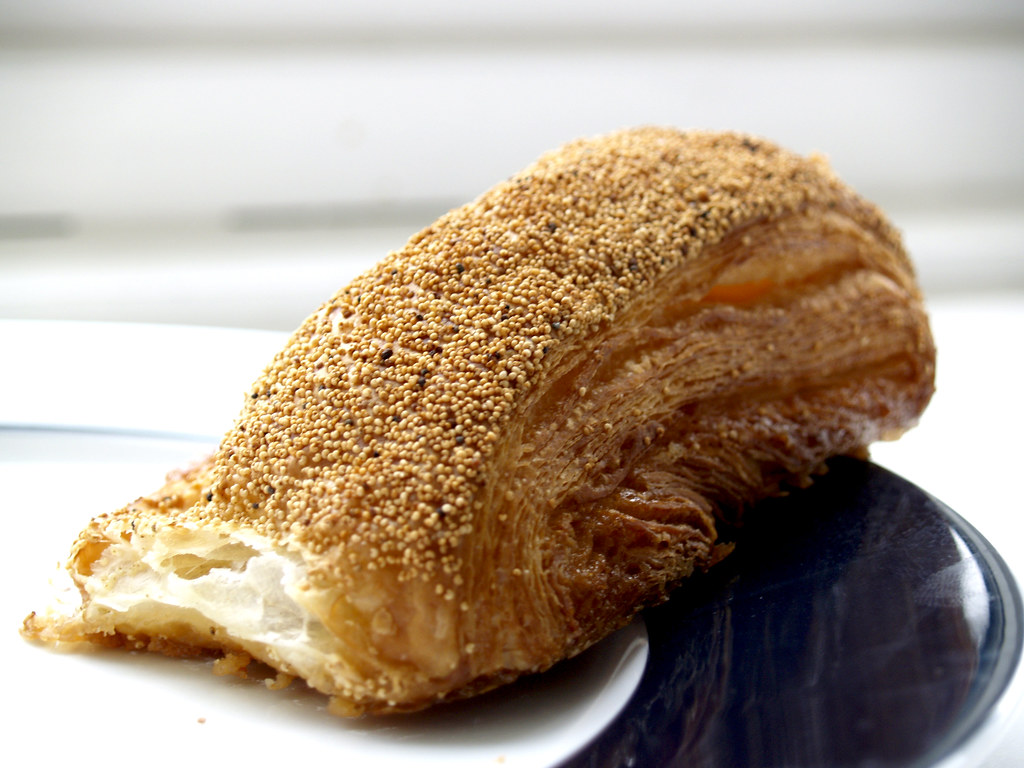
Tebirkes (also known as Københavnerbirkes) are among the most popular Danish pastries. These delectable rolls are traditionally filled with marzipan and have their top covered in poppy seeds. Tebirkes are especially satisfying as a morning treat. Even more so if acquiring them involves walking into your local bakery and smelling the divine scent of freshly baked buttery pastries. One of the many perks of living in Denmark I guess!
Some additional info about Danish Pastries!
Below you will find some answers to inquiries you may not have about those delicious sweets yet. But you possibly will when you delve more in-depth into the fine art of chewing Danish pastries!
- What is remonce? A very common filling for Danish Pastries is remonce. Remonce is a sweet paste made of soft butter and sugar. Quite often other ingredients are also added to the mix, such as cinnamon or marzipan.
- What is onsdagssnegl? Onsdagssnegl means Wednesday snail! It refers to the extremely popular snegle pastries and especially the kanelsnegl. Apparently, it is a sort of a tradition for Danes to eat kanelsnegle every Wednesday. Partaking in the tradition, some bakeries sell their kanelsnegle cheaper this day of the week. This delicious habit originates from the football fan culture, when, back in the ‘90s, the Danish National football team would play its games on Wednesdays. The massive crowds of loyal football fans would customarily eat a kanelsnegl while on their way to the stadium that day.

Pingback: Food in Scandinavia – Our Guide to Scandinavian Cuisine - True Scandinavia